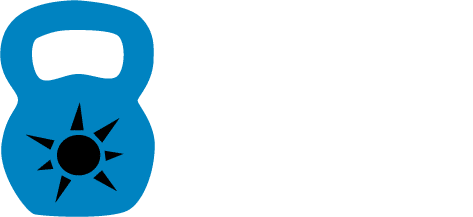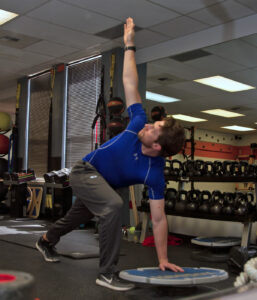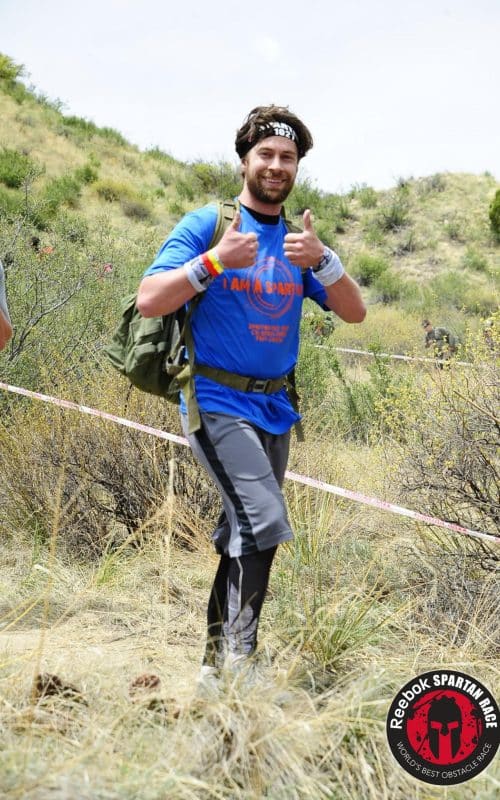Did you know that one out of every four adults over 65 falls each year in the United States? Simple changes in your exercise setup can make a huge difference in your safety and success. Building a strong core is more than just fitness, it helps protect your independence and prevent injuries. Discover practical ways to transform your home into a secure workout space and start your core strengthening journey with confidence.
Quick Summary
| Key Point | Explanation |
|---|---|
| 1. Clear Your Workout Area | Remove tripping hazards to ensure a safe environment for exercising, especially for seniors. |
| 2. Use a Support Chair | Position a sturdy chair nearby for balance support and as a resting place when needed during exercises. |
| 3. Warm Up With Gentle Movements | Engage in gentle dynamic movements to prepare muscles and increase blood flow, reducing the risk of injury. |
| 4. Incorporate Balance Challenges | Include exercises like single-leg stands and heel raises to improve core stability and prevent falls. |
| 5. Track Your Progress Regularly | Evaluate your performance in balance, endurance, and stability every 4-6 weeks to ensure continuous improvement. |
Table of Contents
- Step 1: Prepare A Safe And Comfortable Exercise Area
- Step 2: Warm Up With Gentle Dynamic Movements
- Step 3: Perform Foundational Core Strengthening Exercises
- Step 4: Incorporate Balance And Stability Challenges
- Step 5: Check Progress And Adjust Your Routine
Step 1: Prepare a Safe and Comfortable Exercise Area
Before starting your core strengthening journey, creating a secure workout space is crucial for preventing injuries and building confidence. Your exercise area will be your personal fitness sanctuary where safety meets performance.
First, scan your chosen room or space thoroughly. Clear away any potential tripping hazards like loose rugs, electrical cords, or small furniture pieces. According to research from Right at Home Canada, having an obstacle-free environment is essential for seniors performing gentle dynamic movements.
Position a sturdy chair nearby as a stabilization point. This chair will serve multiple purposes supporting your balance during exercises and providing a secure place to rest if needed. Research indicates that using support structures significantly reduces fall risks during senior fitness activities.
Pro Tip: Place a non-slip mat on the floor to provide additional stability and cushioning for your exercises.
Ensure your workout space has good lighting and maintains a comfortable temperature. Natural light can boost motivation while a moderate room temperature prevents muscle stiffness. Aim for a room around 68 to 72 degrees Fahrenheit for optimal comfort.
Gather your exercise tools beforehand like resistance bands, small weights (if recommended by your trainer), and a water bottle. Keep everything within easy reach to minimize unnecessary movement during your workout.
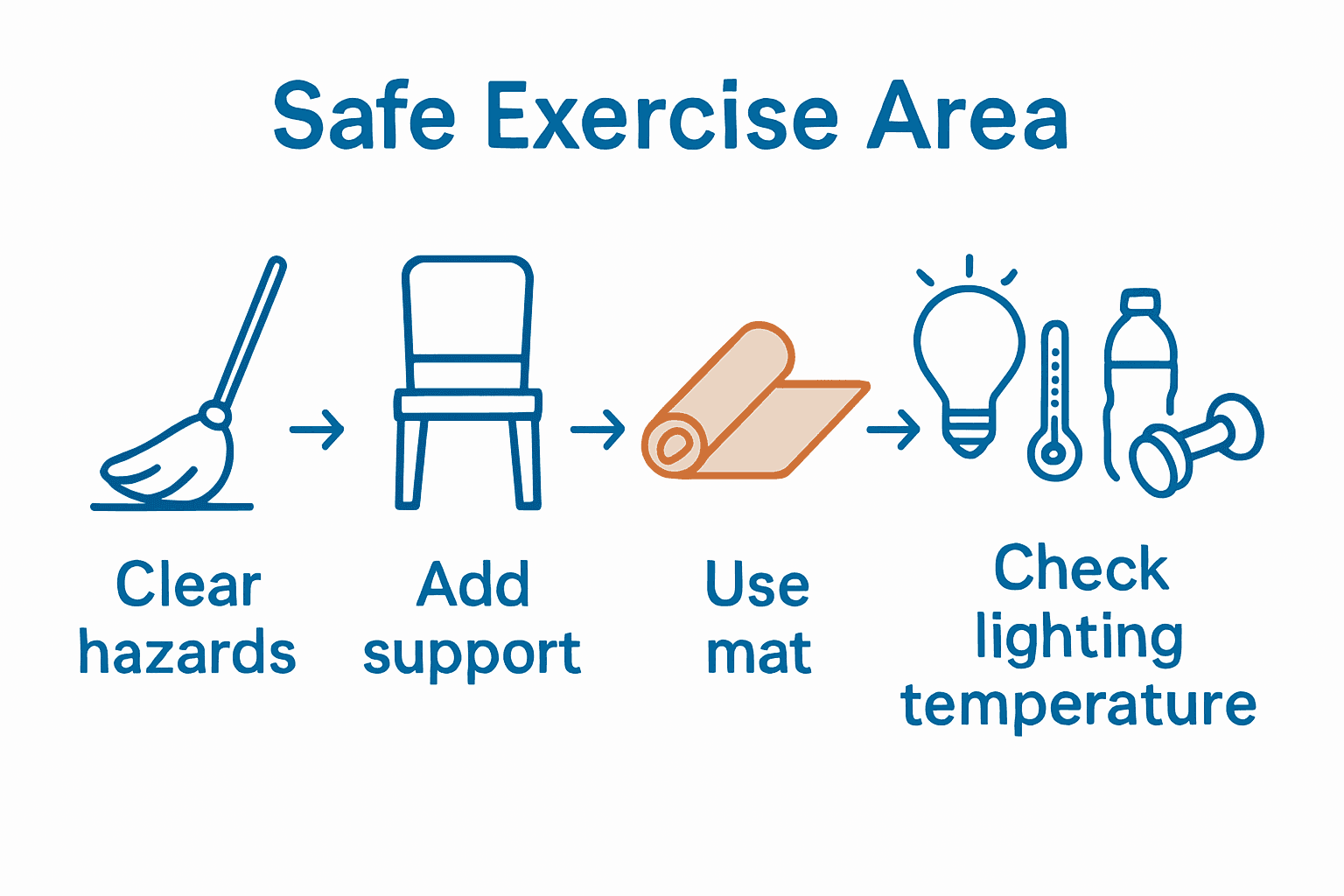
By thoughtfully preparing your exercise area, you are setting yourself up for a safe and successful core strengthening experience.
Here’s a summary of key steps for preparing your exercise area:
| Step | Purpose | Safety Tips |
|---|---|---|
| Clear Hazards | Remove tripping obstacles | Secure rugs Organize cords |
| Add Support | Position a sturdy chair | Use as stabilization point |
| Use Mat | Add non-slip mat | Prevent slipping Cushion joints |
| Check Lighting & Temp | Ensure comfort | Bright light 68-72°F recommended |
| Gather Tools | Prepare equipment | Keep tools nearby Stay hydrated |
Step 2: Warm Up with Gentle Dynamic Movements
Preparing your body with gentle dynamic movements helps activate your muscles and prepare you for core strengthening exercises. These warmup techniques will increase blood flow and reduce the risk of potential injury.
According to Right at Home Canada, seniors can safely perform several low-impact movements to prime their bodies. Start with gentle shoulder rolls. Slowly rotate your shoulders forward five times, then backward five times. This helps loosen your upper body and improve mobility.
Next, try arm circles. Extend your arms out to the sides and make small circular motions first clockwise, then counterclockwise. Each set should last about 10-15 seconds. Tom’s Guide recommends these movements to activate core muscles and enhance joint flexibility.
Pro Tip: Move within your comfort zone. If any movement causes pain, reduce the range of motion or skip that exercise.
Incorporate marching in place with gentle hip openers. Stand near your stabilization chair and lift your knees alternately as if marching. This helps improve circulation and warms up your lower body muscles.
Finish your warmup with side reaches. Stand with feet shoulder-width apart and slowly reach one arm overhead toward the opposite side. Alternate sides to stretch your torso and engage your core muscles.
These gentle movements will prepare your body for the core strengthening exercises ahead, ensuring a safe and effective workout.
Step 3: Perform Foundational Core Strengthening Exercises
Core strengthening is your pathway to improved balance, stability, and overall mobility. By focusing on these foundational exercises, you will build a stronger core that supports your daily movements and reduces injury risk.
Begin with the seated core engagement exercise. Sit comfortably in your stabilization chair with feet flat on the floor. Take a deep breath and gently draw your belly button toward your spine. Hold this gentle contraction for 5-10 seconds, then release. Learn more about functional training techniques to support your core work.
According to research published in the National Institutes of Health, a targeted core stability training program can significantly improve dynamic balance performance in older adults. Specifically, a study showed remarkable gains in weight distribution and trunk stability through consistent core work.
Next, transition to a gentle supine leg lift. Lie on your back with knees bent and feet flat on the floor. Slowly lift one leg about 4-6 inches off the ground, keeping your lower back pressed against the floor. Hold for 3-5 seconds, then lower and repeat with the other leg.
Pro Tip: Always listen to your body. If an exercise causes pain, modify the movement or skip it entirely.
Another effective exercise is the seated torso twist. While sitting in your chair, place your hands on opposite shoulders and slowly rotate your upper body from side to side. This movement helps improve spine flexibility and engages your core muscles.
Finish with a modified plank. Using your chair for support, place your hands on the seat and step back into a gentle incline plank position. Hold this position for 10-15 seconds, focusing on maintaining a straight line from head to heels.
These foundational exercises will progressively build your core strength, setting the stage for more advanced movements in your fitness journey.
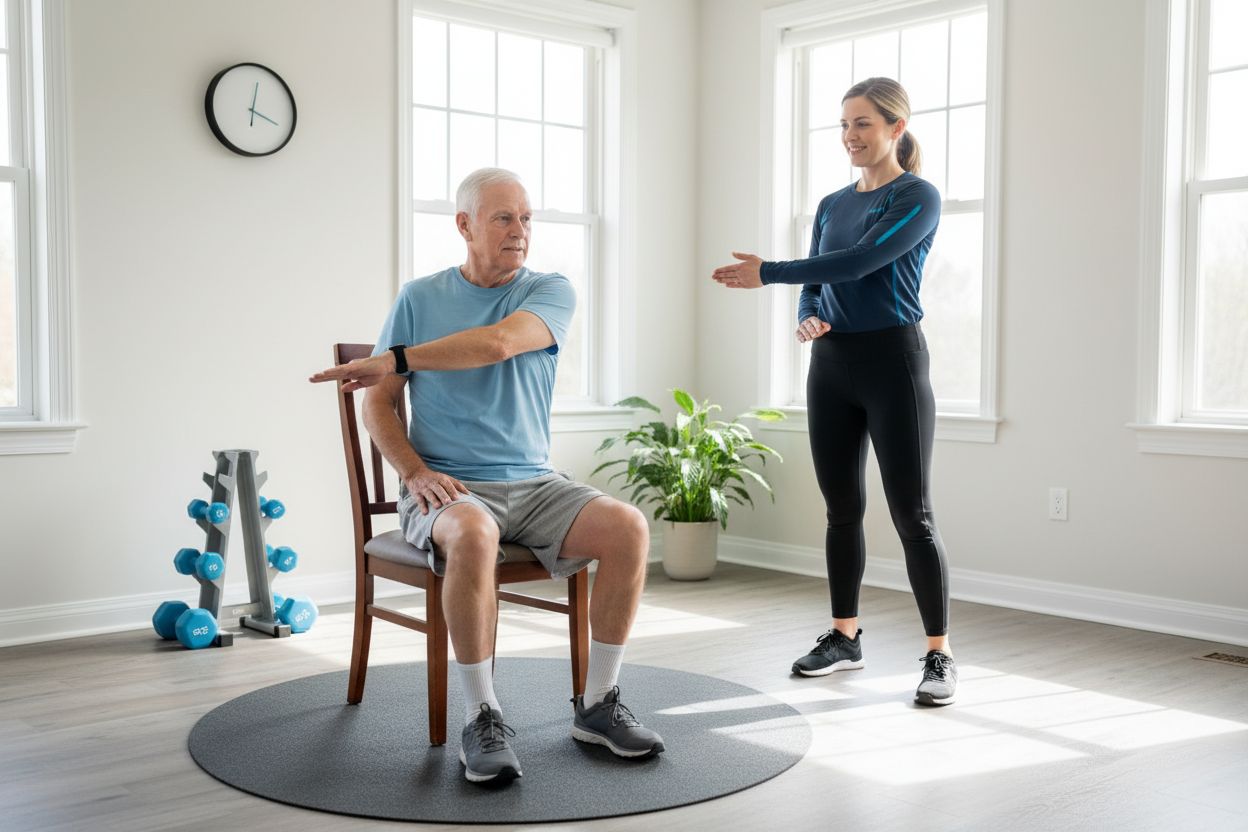
Step 4: Incorporate Balance and Stability Challenges
Now that you have established core strength, it is time to elevate your fitness by introducing balance and stability challenges. These exercises will transform your core work from basic movements to dynamic performance training.
Start with the single-leg balance challenge. Stand near your stabilization chair and lift one foot slightly off the ground. Hold this position for 10-15 seconds, focusing on maintaining a steady posture. According to Health Magazine, such exercises activate core muscles and dramatically improve fall prevention for older adults.
Research demonstrates that combining core stability exercises with proprioceptive training can significantly enhance balance measures. Building on this insight, try the heel raise with chair support. Stand next to your chair, hold its back for support, and slowly rise onto your toes. Lower back down with control, engaging your core throughout the movement.
Pro Tip: Always keep your support chair within arm’s reach during balance exercises to prevent potential falls.
Progress to a figure-4 pose. While standing near your chair, lift one leg and cross your ankle over the opposite knee. Gently bend your standing leg as if sitting back into an imaginary chair. This movement challenges your balance while opening your hips and strengthening stabilizing muscles.
Finish with a side kick exercise. Hold your chair for support, then extend one leg out to the side while maintaining an upright torso. Move slowly and with intention, feeling your core muscles working to keep you stable.
These balance challenges will progressively build your confidence and physical resilience, preparing you for more advanced fitness activities.
Step 5: Check Progress and Adjust Your Routine
Tracking your fitness journey is crucial for maintaining motivation and ensuring continuous improvement in your core strength and mobility. Monitoring your progress helps you understand how your body responds to these targeted exercises.
Start by creating a simple baseline assessment. According to research published in medical journals, using time-based mobility tests can provide objective insights into your physical improvements. Learn more about our strength training approach, which emphasizes personalized progress tracking.
Measure your initial performance in three key areas: balance, endurance, and stability. For balance, record how long you can stand on one leg. For endurance, time how many seated core engagement repetitions you can complete. For stability, note how long you can hold your modified plank position.
Pro Tip: Take photos or videos of your exercises to visually track your form and progress over time.
Research from a systematic review suggests that core training sessions longer than 45 minutes can significantly improve dynamic and static balance in older adults. However, listen to your body and progress gradually. If an exercise becomes too easy, add small challenges like reducing support or increasing hold times.
Re-assess your baseline measurements every 4-6 weeks. Look for improvements in your balance time, core engagement repetitions, and plank hold duration. These metrics will help you understand your progress and motivate you to continue your fitness journey.
Remember that progress is not linear. Some weeks you might feel stronger, while others might feel more challenging. Consistency and patience are your greatest allies in building core strength and mobility.
Ready to Feel Stronger and Move Better Every Day?
If you have ever worried about your balance, stability, or just keeping up with daily activities, you are not alone. Many people face these exact challenges as they look for ways to support healthy weight, stronger muscles, and better joints. The core exercises you just learned are a powerful first step. But lasting results come from consistent guidance and tailored plans — and that is exactly where we come in. Discover more about support for longevity and mobility on our Denver Personal Trainer category page.
Make this the moment you transform your fitness routine into a lasting habit. Visit our main site to explore personalized programs for middle age adults. Find expert help designed for safe progress and real results. Do not wait and let another week pass without taking control of your future strength and comfort. Get started today with Inner Evolution Fitness and experience what dedicated, knowledgeable training can do for your body and your confidence.
Frequently Asked Questions
What are the best core exercises for seniors to improve strength and mobility?
The best core exercises for seniors include seated core engagement, supine leg lifts, and seated torso twists. Perform these exercises 2-3 times a week to start building foundational strength in your core.
How can I create a safe exercise area for core strengthening?
To create a safe exercise area, clear away tripping hazards, position a sturdy chair for support, and use a non-slip mat. Ensure good lighting and maintain a comfortable room temperature to enhance your workout experience.
What warm-up movements should seniors do before core exercises?
Seniors should perform gentle dynamic movements like shoulder rolls, arm circles, and marching in place to warm up. Spending about 5-10 minutes on these movements increases blood flow and reduces injury risk.
How often should I check my progress with core strengthening exercises?
You should check your progress every 4-6 weeks by assessing balance, endurance, and stability measures. This could involve timing how long you can stand on one leg or how many core engagement repetitions you can complete.
Are there any balance challenges that can complement core exercises for seniors?
Yes, incorporating balance challenges like single-leg balances and heel raises can significantly enhance core workouts. Aim to include these balance exercises in your routine twice a week to improve stability and confidence.
What should I do if I experience pain during core exercises?
If you experience pain during core exercises, immediately modify the movement or skip it altogether. Always listen to your body and prioritize comfort to prevent injuries while exercising.
Recommended
- Unlocking Longevity – Denver Personal Trainer
- The Hidden Benefits of Strength Training for Your Brain and How To Train – Denver Personal Trainer
- Unleashing the Power Within – Denver Personal Trainer
- Functional Training – Denver Personal Trainer
- 7 Exciting Sports for Seniors to Stay Active and Enjoy –
- Unveiling The Power Of Free Weights And Muscle Growth
